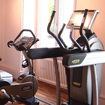Copy of Reyhan Torlak 08/05/14 Health Problems
Elementary level
Description
Materials
Main Aims
-
To provide gist, specific information and detailed information in the context of health problems
Subsidiary Aims
-
to provide fluency in the context of health problems - to teach vocabulary to make the understanding easier
Procedure (39-34 minutes)
-T tells the Ss to stand up and make a semi circle -T gives a command like "Hold your right arm" or "Touch your head" -the Ss do what the T says by pointing to their parts of the bodies(Total Physical Response) -T sometimes chooses specific students for her commands to make this revision more personal/challenging
-T shows some photos and asks the Ss to name the parts of the body they see in the photos -T gets whole class feedback and keeps it short -Ss look at the photos and T asks "What's wrong with these people?" -T tries to elicit "They're ill./ They're in pain. -T checks/elicits what the Ss already know about some specific health problems.
-T gives the instructions and then the folded HO's -The Ss look at the first part including two questions, they work in pairs to discuss them -T monitors and picks up some points -Then the T nominates Ss to report their partner's answers to the class - T does some error correction orally if it seems necessary ICQs; 1)Are we going to write something? No. 2)Are we going to talk and learn something about our partners? Yes.
-T teaches new vocab with "ECDW" method -T uses pictures to elicit the names of the health problems, asks some CCQs if necessary, drills them chorally and individually and shows the stress -T highlights the fact that "ch" in "stomach" is pronounced /k/ and "gh" in "cough" is pronounced /f/ -T puts the pictures on the floor and calls out one of them, the Ss show the correct one using their fingers (optional)
-T gives instructions for the exercise and then the Ss open the second part of the HO -ICQs: 1)Are we going to write something? No. 2)What are we going to do? Listen and tick the health problems we hear -Ss listen to the audio 11.2 (1:36 min) only once to tick the health problems they hear -T monitors and sees how they're doing -Ss check their answers in pairs - T gets whole class feedback and keeps it short
-T gives instructions and Ss open the third part of the HO -Ss look at the problems in the second exercise and try to write them in the correct place in the table -Ss compare their answers in pairs via speaking (give an example; I think when you have a cold, you have a runny nose) -T plays the audio, Ss listen and tick the problems that they guessed correctly -T opens PPT and Ss check their answers
-T gives instructions and Ss open the last part of the HO -ICQs; 1)Are we going to complete some sentences? No. 2)Are we going to circle the correct answers? Yes. -Ss listen to the audio 11.2 again and circle the correct alternatives they hear -Ss check their answers via speaking -T monitors and understands it is necessary to provide a second listening or not -For feedback, T gives the written recording and Ss check their answers -T gives delayed feedback if necessary
-T provides a demo for the Ss -T regroups the Ss giving them the names of the illnesses -T gives different health problems to each group and tells the Ss to discuss about these illnesses -Ss share their ideas, take some notes, and talk about the symptoms of the illnesses, the things that we can do to fight with them. -T monitors and gives delayed feedback on the board.

